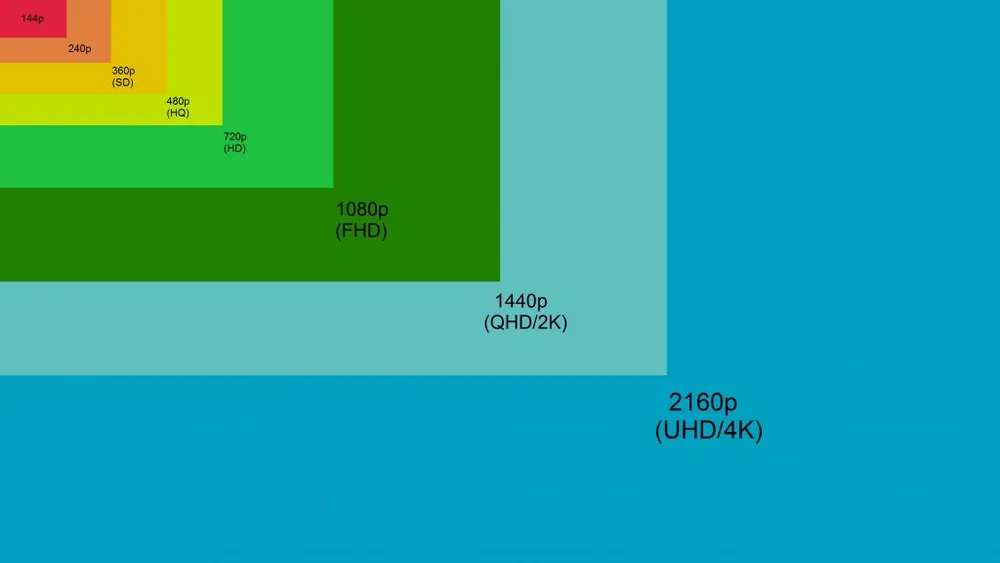
1440p resolution has been gaining much traction in the past few years. More and more gamers are choosing 1440p over 1080p as their gaming resolution. But is 1440p really better than 1080p? What are the pros and cons of 1440p vs. 1080p for gaming? In this article, we will answer your questions and help you decide which resolution is best for you!
Table of Contents
Quick Answer: 1080p vs. 1440p: Which Is Better For Gaming?
1440p resolution is better for gaming because it offers sharper and more detailed images and more immersive gameplay. However. 1440p requires a more powerful graphics card and monitor than 1080p to run properly. So if you’re looking to game at 1440p, you’ll need to make sure your rig can handle it.
What Are the Pros and Cons of Having a 1440p Resolution?
The biggest advantage of 1440p over 1080p is that 1440p offers a much sharper and more detailed image. A 1440p screen has 78% more pixels than a 1080p screen, so you can expect images to be noticeably more detailed. This also means that 1440p is superior for gaming purposes as it provides a more immersive gameplay experience.
Another advantage of having a higher-res 1440p monitor is the extra screen real estate. This can be helpful for work as you can have more windows open side-by-side without having to worry about things getting too cluttered. 1440p is also great for watching movies and TV shows as it provides a more cinematic experience.
On the downside, 1440p monitors are more expensive than 1080p monitors and require more powerful hardware to run properly. 1440p is also not as widely supported as 1080p, so you may have to do some additional research to find games and other software that runs at 1440p.
Gamers who want to future-proof their setups and have the extra cash to spend should consider 1440p. But for most gamers, 1080p is still the sweet spot. It provides a great balance of performance and price and is widely supported by the gaming community.
What Are The Pros and Cons of 1080p?
1080p, or “Full HD,” is the most popular resolution for gaming. It offers a significant step up from 720p while still being relatively affordable and widely supported. 1080p also doesn’t require as much powerful hardware to run without lag.
Since the computer has to render fewer pixels, the load on the graphics card is reduced, which means less expensive cards can provide a better 1080p gaming experience.
However, there are some drawbacks to 1080p. The most notable is that it doesn’t offer as much detail as 1440p or higher resolutions. As a result, text can appear blurry, and the image won’t be as sharp.
When Should You Consider Getting a 1440p Screen?
Even if 1080p is still the sweetheart of the gaming world, 1440p is on the rise. 1440p, also known as Quad HD, offers a significant bump in resolution. As a result, it’s ideal for gamers who want a more immersive experience or play on large screens.
When you have a larger screen, pixel density becomes an essential factor. 1440p also offers a big jump in pixel density over 1080p, which can be crucial for users with large displays. For gamers with a display larger than 27 inches, 1440p is definitely worth considering. It will provide a noticeable increase in image quality without putting too much strain on your GPU.
If you’re a designer that works with high-resolution images or video, 1440p is also a great choice. It will give you plenty of screen real estate to work with and allow you to see more detail in your work.
However, 1440p does have some drawbacks. The most significant one is that it can be demanding on your hardware. If you don’t have a powerful enough GPU, you may not be able to run games at 1440p, so make sure your hardware is up to the task.
1440p Resolution or Higher Refresh Rate?

One of the most common questions we get asked about screens for gaming is whether it’s better to have a monitor with a high refresh rate or a monitor with a higher resolution.
The answer to this question depends on what you value most in your gaming experience. If you’re someone who values vivid images and wants to be able to see all the little details in your games, 1440p is the better choice. On the other hand, if you care more about seeing things moving on your screen with minimal delay, then a high refresh rate is what you should look for.
Gamers that play competitive multiplayer games such as CS: GO, Apex Legends, and Dota 2 will almost always want to choose a monitor with a high refresh rate because the extra frames per second can give you a competitive advantage. On the other hand, if you enjoy playing story-driven games or single-player games where the action isn’t as fast-paced, 1440p is an excellent option because it will provide you with the sharpest image quality.
If you have the money, you could also consider a screen with both 1440p and a high refresh rate like 144Hz or even 240Hz. This will give you the best of both worlds, but it’s still uncommon to find affordable products, so you often have to make a choice between 1440p and high refresh rates.
Is 1440p The Future?
1440p is slowly becoming more popular as the years go by. This is because more and more games support 1440p, and 1440p monitors are becoming cheaper.
A few things are working against 1440p, though. For example, it’s demanding to run games in 1440p, and there’s still only a small percentage of people with 1440p monitors. Unfortunately, this means that game manufacturers are still focusing on 1080p, and 1440p is often seen as an afterthought. One could also argue that 4K is the future of gaming, and many see 1440p as a stepping stone to get there.
However, getting a 1440p display is still worth it if you have the money. It’s a significant upgrade over 1080p and will future-proof your gaming experience for a few years. Games will continue to look better and better, and 1440p will be able to handle them without any problems.